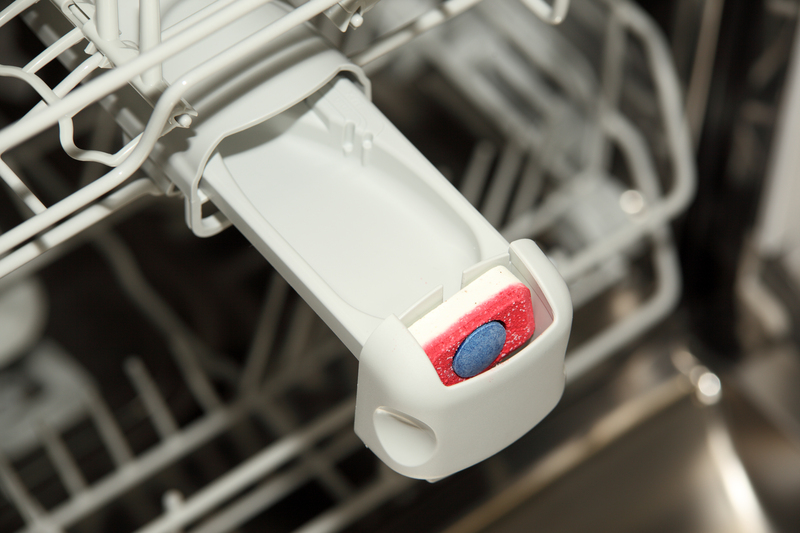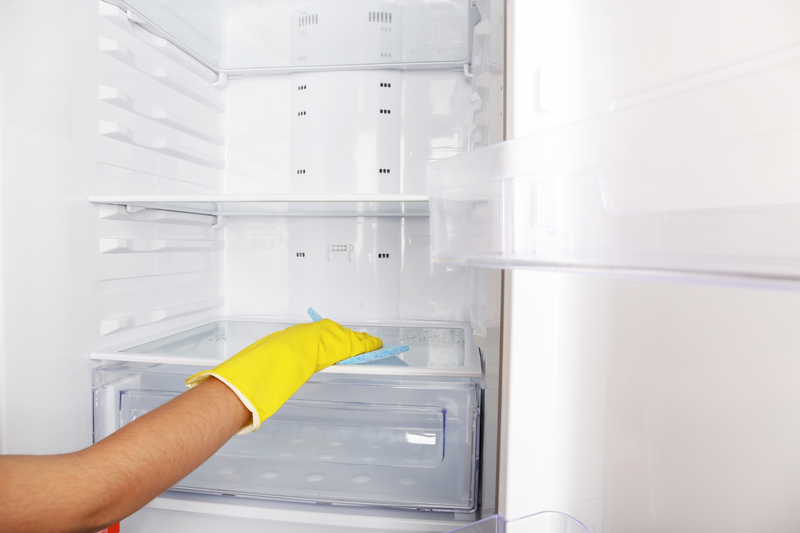Mold-Free Living: Transform Your Bathroom Space
Posted on 18/08/2025
Mold-Free Living: Transform Your Bathroom Space for a Healthier Home
Is your bathroom a breeding ground for unsightly mold and mildew? Keeping this essential space clean isn't just about aesthetics--it's vital for your family's health. Mold isn't just a nuisance; it can pose serious health risks. Mold-Free Living is a lifestyle that begins with the space most prone to dampness: your bathroom. If you dream of a fresh, healthy, and mold-free bathroom, read on. This article will guide you through comprehensive strategies to transform your bathroom, ensuring it remains hygienic, beautiful, and mold-resistant.
Understanding the Impact of Mold in Bathrooms
Mold is more than a minor inconvenience. It can cause respiratory issues, allergies, and even severe health problems, especially in children, seniors, or anyone with weakened immune systems. The bathroom environment, with its frequent humidity, provides the perfect conditions for mold to thrive.
There are hundreds of mold varieties, but the most common in bathrooms are Aspergillus, Penicillium, and Stachybotrys (commonly known as black mold). Ignoring mold growth can result in expensive repairs, damage to fixtures and structures, and ongoing exposure to potentially harmful spores.
Why Bathrooms Are Vulnerable to Mold
- High Moisture: Frequent showers and bathing create a moist environment.
- Poor Ventilation: Many bathrooms lack adequate airflow to dry after use.
- Organic Material: Grime, soap scum, and dust offer food sources for mold.
- Hidden Spaces: Mold often hides behind tiles, under sinks, or in grout lines.

Key Steps to Achieving a Mold-Free Bathroom
Transforming your bathroom into a mold-free oasis involves a blend of prevention, regular cleaning, and smart upgrades. Here's a step-by-step guide to get you started.
1. Evaluate Your Current Bathroom
Begin by thoroughly inspecting your bathroom. Look for visible mold on ceilings, corners, grout, and under sinks. Check for musty odors--a classic sign of hidden mold. These signs will help target your cleanup and identify areas needing improvement.
2. Enhance Bathroom Ventilation
- Install a Quality Exhaust Fan: A powerful bathroom exhaust fan is essential for mold prevention. Make sure it vents outside (not just into the attic).
- Leave Doors and Windows Open: After bathing, keep the door and window open for at least 30 minutes.
- Consider a Dehumidifier: In problem areas, a bathroom-friendly dehumidifier can help keep moisture in check.
Proper ventilation is your bathroom's first line of defense in mold-free living. Investing in upgrades, like smart fans with humidity sensors, can keep moisture levels safe with minimal effort.
3. Address Leaks and Plumbing Issues
- Fix Leaky Faucets: Drips add extra moisture to the environment.
- Inspect Under Sinks: Look for dampness or slow leaks in pipes.
- Replace Worn Seals: Old or cracked caulking around tubs and sinks is a mold magnet. Remove and replace regularly.
Even minor leaks can provide the sustained moisture that mold craves. Early leak detection is essential for maintaining a mold-resistant bathroom.
4. Embrace Mold-Resistant Surfaces and Materials
- Ceramic or Porcelain Tile: Fewer pores mean less chance for mold attachment.
- Mold-Resistant Paint: Choose paints formulated to resist microbial growth, especially for ceilings and walls.
- Solid Surfaces: Materials like quartz or solid-surface counters lack the pores that harbor mold.
- Water-Resistant Grout: Use epoxy grout in tiles, which is more resistant to moisture than cement-based grouts.
When renovating or upgrading, choose materials specifically designed to reduce bathroom mold. These investments repay you with easier cleaning and healthier air.
5. Establish a Mold-Free Cleaning Routine
- Daily Maintenance: Squeegee glass doors and tiles after every shower. Wipe surfaces dry, and hang towels to air out.
- Weekly Deep Cleaning: Use mold-killing cleaners (like vinegar, hydrogen peroxide, or commercial bathroom sprays) on all surfaces, including grout lines and behind fixtures.
- Monthly Inspections: Check hidden corners, drains, and under cabinetry for early signs of mold growth.
Consistency is key. With disciplined mold-free bathroom cleaning habits, you'll make it difficult for mold and mildew to take hold.
Natural and Chemical Solutions for Mold Removal
If you spot minor mold, prompt removal with the right products is critical for mold-free living.
Natural Mold Cleaners
- White Vinegar: Spray undiluted on affected areas, let sit for an hour, then scrub with a brush and rinse.
- Baking Soda: Mix with water to form a paste, apply on mold, scrub, and rinse away.
- Hydrogen Peroxide (3%): Effective for tiles and grout. Apply, leave for 10 minutes, scrub, and rinse.
These solutions are safe for most bathroom surfaces and pose fewer health risks than harsh chemicals. For stubborn spots, repeat as needed.
Chemical Mold Removers
- Commercial Mold Sprays: Look for EPA-approved products which are proven to kill mold at the root.
- Bleach Solution: Dilute one part bleach to ten parts water. Use for tiles, but never on porous or colored surfaces (risk of damage).
Important: Always wear gloves, goggles, and ensure the area is well-ventilated when using any cleaning chemicals.
Smart Design Tips for Mold-Resistant Bathrooms
Redesigning or upgrading your bathroom? With a few smart design choices, you can drastically reduce mold problems for years to come.
Incorporate Mold-Free Features
- Wall Panels Instead of Tiles: Solid wall panels join seamlessly and leave no grout lines for mold to hide.
- Walk-In Showers with Good Drainage: Sloped floors and well-placed drains prevent standing water.
- Floating Vanities: Raised cabinets make floor cleaning easier, avoiding trapped moisture below.
- Minimalist Design: Fewer decorative objects and hidden spaces mean fewer spots for mold.
Choose Mold-Resistant Fixtures
- Glass Shower Doors: Resist mold better than fabric curtains.
- Silicone over Acrylic Caulk: Silicone is less prone to mold development.
- Ventilated Storage: Open shelves dry faster, discouraging mold in stored towels and supplies.
Implement these features for a long-lasting, mold-free bathroom environment.
Maintain a Healthy Humidity Level
To achieve mold-free living, maintaining optimal bathroom humidity is essential. Mold can develop in any space where the relative humidity exceeds 60%. Aim for 30%-50% to be safe.
- Use a Hygrometer: These inexpensive devices monitor bathroom humidity in real time.
- Ventilate After Showers: Run exhaust fans for at least 15-30 minutes post-shower.
- Remove Wet Items Promptly: Don't leave wet towels, sponges, or bath mats on bathroom floors.
By controlling humidity, you're taking a proactive approach to mold prevention and healthier indoor air.
The Health Benefits of a Mold-Free Bathroom
- Improved Air Quality: No lingering spores or musty odors.
- Reduced Allergy Symptoms: Lower exposure to allergens and toxins.
- Fewer Infections: Mold is linked to respiratory and skin conditions--especially in sensitive individuals.
- Higher Property Value: A mold-free bathroom attracts buyers and lowers risk of hidden repair costs.
Transforming your bathroom into a mold-free living space ensures your home remains a haven of health and comfort.

Frequently Asked Questions (FAQ) about Mold-Free Bathrooms
How often should I clean my bathroom to prevent mold?
Aim for light cleaning of high-moisture areas daily, with more thorough cleaning weekly. Inspect hidden or seldom-used corners at least once a month.
Can I remove bathroom mold myself?
*Small areas can typically be handled with natural or commercial cleaners, if you wear protective gear and ensure good ventilation. For infestations over 10 square feet or involving dangerous black mold, call a professional.*
Which bathrooms are most at risk for mold growth?
Bathrooms without windows, with poor ventilation, or in older homes are at greatest risk. Mold is also more likely in bathrooms with old, cracked grout, persistent leaks, or non-water-resistant materials.
Is mold always visible?
No. Sometimes mold grows behind walls, under floors, or inside ventilation ducts. Musty smells, persistent humidity, or unexplained respiratory issues can hint at hidden mold--consider professional assessment if you suspect a hidden mold problem.
Conclusion: Embrace Mold-Free Living and Transform Your Bathroom Today
A truly mold-free bathroom doesn't happen overnight, but with thoughtful design, daily care, and a little vigilance, you can keep mold and mildew at bay. Make the commitment to mold prevention in your bathroom--your health, wallet, and home value will all benefit.
- Upgrade your ventilation and eliminate leaks early.
- Choose mold-resistant materials and tackle minor mold spots right away.
- Adopt daily habits for a clean, dry bathroom environment.
With these steps, your dream of a mold-free, healthy, and beautiful bathroom is well within reach. Transform your bathroom space today--and enjoy the peace of mind that comes from spotless, worry-free living.
Your bathroom can be a sanctuary. Make it mold-free--for good!




